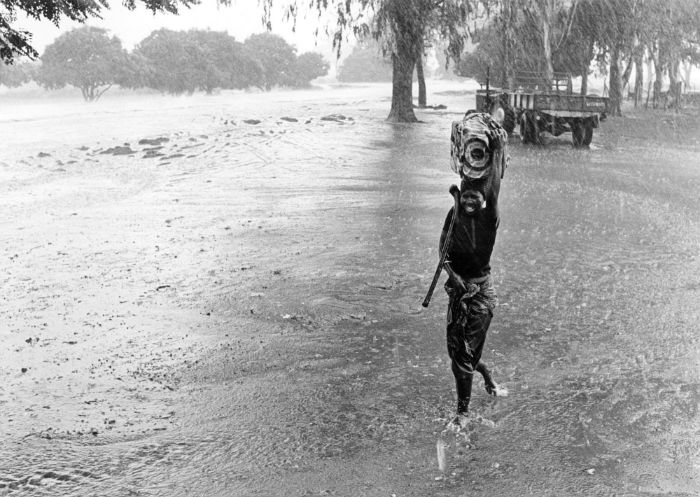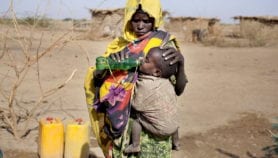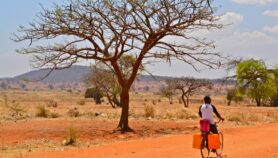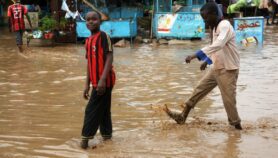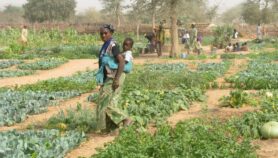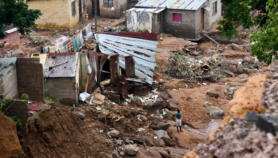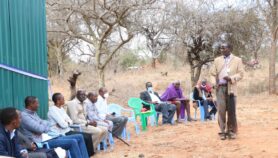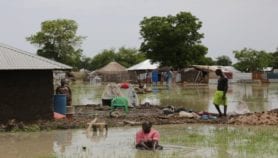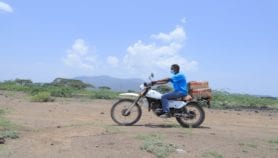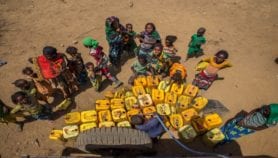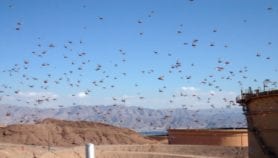By: Esther Ngumbi
Send to a friend
The details you provide on this page will not be used to send unsolicited email, and will not be sold to a 3rd party. See privacy policy.
After a long dry spell coupled with drought, the rains have finally arrived in many African countries, including Kenya and South Africa, and the 2017 planting season is underway. But this joy may be short-lived. The United Nations World Meteorological Organization released an update that projects a 50-60 per cent chance of an El Niño event forming in mid- to-late 2017.
Depending on the regions and hemisphere, El Niño events can bring either drought or floods. Either way, these conditions trigger food insecurity, increase malnutrition and enhance vulnerability to infectious diseases.
But this is not new. The last El Niño event happened in 2015-2016. This caused the worst drought in decades and failed harvests in parts of Africa, Asia and the Pacific. As a result, millions of citizens across Africa and Asia experienced food insecurity.
“Preparing in advance and setting up concrete national plans will strengthen resilience, safeguard livelihoods and avert disaster.”
Esther Ngumbi
Such warnings must be taken seriously and measures need to be taken to ensure that citizens in the countries that may be affected are cushioned. After all, we all know that failure to act would lead to dire consequences as seen with the 2015-2016 El Niño events.
Efforts against 2016 El Niño
There is no dearth of examples of United States and countries in the African continent and other continents that have successfully implemented El Niño preparedness plans in the past.
Faced with the 2016 El Niño event, the state of California in the United States prepared in advance and created a thoughtful plan of action that was communicated to the citizens across the state.
Ethiopia, Kenya and Uganda are African countries that have in the past also made efforts to prepare for El Niño related events, even though the results were not as perfect as in California.
Anticipating the 2016 El Niño event, the government of Ethiopia prepared and rolled out plans for its citizens, including allocating 700 million birr (almost US$30 million) to pre-empt the influence and consequences of the phenomenon in the country. In addition, it communicated to its citizens the anticipated effects and implemented other actions to alleviate the aftermath effects. And in Nairobi and Narok, Kenya, government officials briefed citizens of the upcoming El Niño in public forums and urged citizens to prepare.
The RedR UK programme worked with Kenya during the 2016 Niño event and helped the government to develop disaster risk management manuals and plans that were distributed to county governments. Thus, most Kenyan counties put in place preparedness measures such as early warning mechanisms, drought contingency plans and a disaster management fund.
Preparing against predicted El Niño
First and foremost, governments and key actors in aiding food security must act and prepare with a sense of urgency. They should come up with detailed, well-thought out preparedness measures and national contingency plans of action.
These include deciding on triggers and a timeline for action, decision points, communication channels as well as the registration of its citizens that may need help. Preparing in advance and setting up concrete national plans will strengthen resilience, safeguard livelihoods and avert disaster.
Alternatively, countries can work with the United Nations Food and Agriculture Organization or other humanitarian agencies including United States Agency for International Development and the WHO to build the capacity to prepare for these disasters.
Preparedness must be backed with interventions that help citizens to make the most out of the current rain season before the predicted El Niño strikes.
“Countries should strive to learn to assess impact in order to know what works best.”
Esther Ngumbi
These interventions include ensuring that farmers have all the agricultural inputs such as drought-tolerant seed varieties including sorghum, millet and cowpeas that are needed for the planting seasons. Governments, through their agricultural extension officers, must educate the farmers on the need to plant these varieties.
All these interventions would allow farmers to increase their crop production and yields while diversifying and adapting their farming practices to make the most out of the current season.
Long-term and communication interventions needed
Equally important are long-term interventions. These include investing in irrigation and water supply facilities as well as rehabilitating water catchments and implementing rainwater harvesting to ensure that countries are able to grow crops during the drought season.
Most importantly, governments should develop strong and reliable communication channels that enhance the dissemination and sharing of information and data about all the available interventions from communities to national and regional levels.
Finally, countries should strive to learn to assess impact in order to know what works best. This would allow countries to keep improving their disaster preparedness coping strategies.
Building on best practices should also help reduce costs. The UN FAO is in a good position to strategically coordinate such impact assessment exercises. After all, it does a good job compiling reports of how different countries responded to El Niño events.
Learning from the past, where El Niño events led to major famines, disease outbreaks, widespread loss of lives and displacement of communities, Africa should act with urgency to adequately prepare for what is predicted to come. We must never repeat past mistakes.
Esther Ngumbi is a postdoctoral researcher at the Department of Entomology and Plant Pathology at Auburn University in Alabama, United States. She serves as a 2015 Clinton Global University (CGI U) Mentor for Agriculture and is a 2015 New Voices Fellow at the Aspen Institute. She can be contacted at [email protected]
This piece was produced by SciDev.Net’s Sub-Saharan Africa English desk.
References
[1] Irene Mwendwa and others Kenya: Joy of rains after drought cut short by trail of destruction (allAfrica, 4 May 2017).
[2] Alex Mitchley and James de Villiers Cape Town residents jubilant as rain falls (News24, 3 June 2017).
[3] WMO Update: 50-60% chance of El Niño later this year (World Meteorological Organization, 28 April 2017).
[4] Abu-Bakarr Jalloh El Nino-induced floods ravage East Africa (Deutsche welle, 9 May 2016).
[5] Lucy Lamble and Emma Graham-Harrison Drought and rising temperatures 'leaves 36m people across Africa facing hunger (The Guardian, 16 March 2016).
[6] East Africa crisis (CARE, 2016).
[7] Leslie Lopez El Nino: NASA describes what California should expect next (abc7, 2 February 2016).
[8] Mario Sevilla Officials release El Niño disaster response plan ahead of historic storm season (Kron4, 9 December 2015).
[9] El Niño preparation plan 2015/16 (Culver City, October 2015).
[10] Girmachew Gashaw Ethiopia: Preparedness to Address El Nino Impact (allAfrica, 14 August 2015).
[11] Lizabeth Paulat Uganda braces for strongest El Nino in 20 years (VOA, 10 November 2015).
[12] Elizabeth Were Kenya: Nairobi urged to prepare for El Nino (allAfrica, 19 August 2015).
[13] Narok Prepares for El Nino with check dams (Narok County Government, 2017).
[14] Africa: El Niño preparation and response (USAID, 2016)
[15] Kenya InterAgency Rapid Assessment (The RedR UK, accessed May 2017 )
[16] 2015–2016 El Niño Early action and response for agriculture, food security and nutrition (UN FAO, July 2016).


